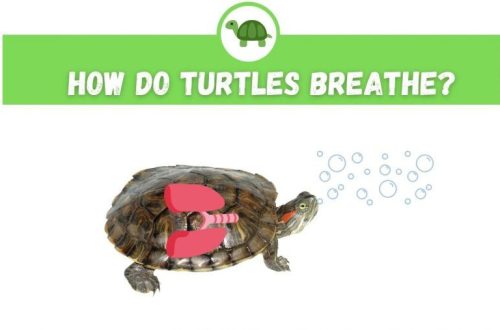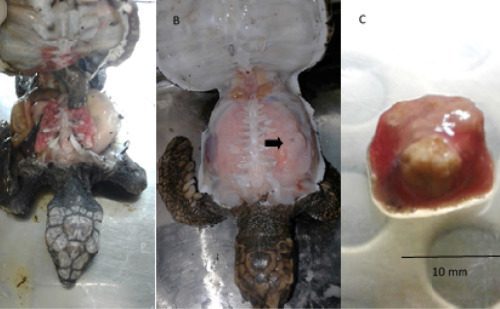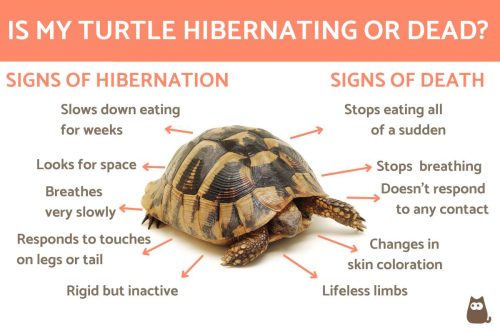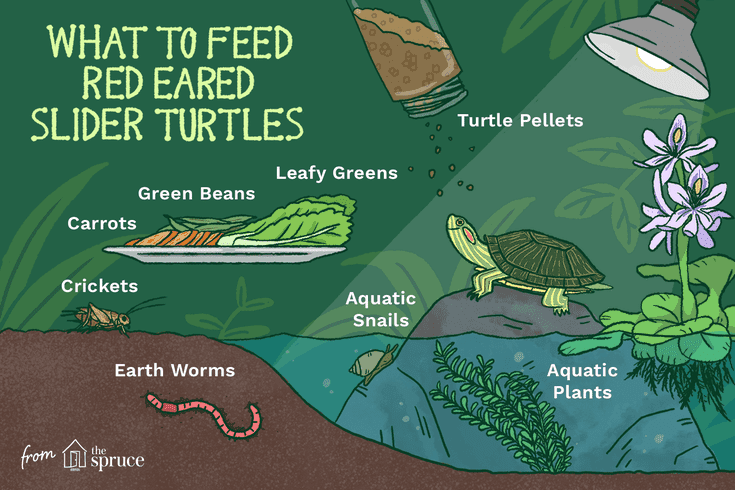
Rules for feeding land and aquatic turtles
Answers to the main questions that arise when feeding turtles: the size of the food, its quantity, temperature, what food to give, where to feed, top dressing.
Feed size
Depending on the size of the reptile, the food should be finely, medium or coarsely chopped. The size of one piece should be less than half the turtle’s head. Aquatic turtles break large pieces with sharp claws, so they can be given larger food. Lettuce and weeds can not be cut.
The amount of food for the turtle
Give the predatory turtle as much food as it can eat in half an hour. Remember this amount and give her that much each time. Approximately the amount of food for one feeding should be no more than half the tortoise shell.
Feed temperature and condition
Room temperature (do not give food directly from the refrigerator or not completely thawed), food only raw (heat treatment is not allowed).
Turtle feeding frequency
Young turtles up to 2 years old (or up to 7 cm long) are fed every day with plenty of calcium in their food, and adult turtles – 2-3 times a week. Perishable food can be left in the terrarium for no more than 2-3 hours.
What to feed a turtle
Do not feed turtles only one type of food! Mixes only! Do not spoil turtles – do not give them the most delicious and what they love the most. If the turtle eats only one type of food and refuses another, offer it a mixture of “favorite” and “unloved” foods, or let it starve for a while (usually a few days is enough).
Even if a turtle eats something with appetite, this does not mean that it can be given to eat (milk, bread, cheese).
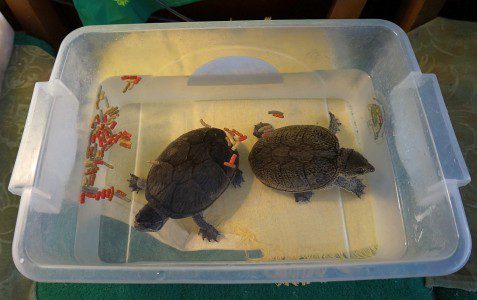
How to give vitamins and calcium
Aquatic turtles should receive vitamins and calcium from a wholesome diet, while tortoises and tortoises should be given powdered vitamins and calcium. In the form of a liquid or tablets, vitamins and calcium should not be given. Vitamins and calcium are mixed with food and given to the turtle by hand or in a bowl. It is recommended to put a cuttlefish bone (sepia) in an aquarium or terrarium, then turtles with a lack of calcium will gnaw off a piece of it, replenishing the balance.
Food colors and palatability
The color of the food may also play a role: turtles are good at seeing colors and prefer yellows, oranges, and reds. If you add pumpkin, mango, oranges, melon, tomatoes, red pepper to the feed mixture (provided that the turtles are satisfied with the smell), the mixture will look more appetizing for them (sweet fruits can only be given to tropical turtles, not steppe ones).
Where to feed the turtle
For land turtles, food is placed in a feeder, for freshwater and marine turtles – it is given with tweezers, thrown into the water or placed on a bank near the water. Freshwater turtles should be taught to take food from the shore. Then it will pollute the water less and it will be possible to add vitamins and calcium to it. You can also feed the turtles in a separate pit, basin or in the bathroom, dropping them out of the aquarium for 1-2 hours. Then the water stays longer clean.
Feeding
In addition to vegetable food, tortoises can be given herbal alfalfa meal. How to use: pour drinking water at room temperature, mix with the main food (salad, fresh vegetables). It contains calcium, vitamins A, D, E, B1, B2, as well as various trace elements.
To prevent the water in the aquarium from spoiling
Plant aquatic turtles in a separate container with aquarium water (sump), where you feed them. After feeding, the turtles should be placed back in their home aquarium, and the water from the feeder should be poured into the toilet.
What time of day should you feed your turtle?
Since most turtles are diurnal, they should be fed in the morning or afternoon. Better in the morning, because. the normal biorhythm of a reptile of temperate latitudes is as follows: warmed up – ate – started the process of digestion BEFORE the evening coolness sets in. The metabolic rate of reptiles is directly dependent on temperature. And by feeding the turtle shortly before turning off the lamps, there is a risk of creating conditions for the food to settle in the stomach with dead weight, without full digestion by digestive enzymes. This applies to land turtles and those freshwater turtles that are characterized by regular basking (red-eared and marsh among them). For the majority of silt, trionics, two-clawed, etc., predominantly aquatic species – at a stable water temperature during the day, the issue is unprincipled.
If the turtle refuses to eat
The turtle may not eat because it is cold, stressed, or sick. If you only have her for a couple of hours or days, then she just needs time to get used to a new place. If she does not eat for more than 3 days, but is active and looks normal, check if you are observing the conditions for keeping her at home correctly. If the turtle is inactive, has a runny nose, swollen eyes, sneezes or blows bubbles through its nose, show it to a herpetologist veterinarian.
How long can a turtle not eat or drink?
A healthy adult tortoise can go without food for up to two weeks without much health consequences. A young turtle (adolescent) may not eat for up to a week. Baby – from 3 days to a week. Therefore, nothing bad will happen if you leave an adult red-eared turtle for a week or 1,5 for a vacation. However, it is highly desirable to put live fish, snails and algae into her aquarium, so that if she becomes hungry, she herself can get her own food. Aquatic turtles are more dependent on water than terrestrial turtles, but they can go without water for up to a week. Therefore, if you lost a turtle in an apartment or you are taking a turtle with you to another city by car, then the turtle will survive quite normally for several days. Completely aquatic turtles, for example, trionics, it is better not to leave without water for more than a couple of days.
Turtle eats too much
At different times of the year, turtle activity is different, with the onset of spring and summer, turtles begin to eat more to store fat for the winter, when they should have biological hibernation. However, overfeeding is fraught with obesity and health problems. So how do you tell if a turtle is eating too much? Normally, a young tortoise (up to 10-12 cm) should receive food once a day. An adult turtle should receive food once every other day – every two. The approximate amount of food is half the size of a turtle shell. Aquatic turtles are given as much food as a turtle eats in an hour. The rest of the food is removed or the turtle is returned from the nursery where it was fed to its aquarium. Emaciated turtles (the skin is far behind the paws) should be given food daily, bathed regularly (every day or every other day) and how much they eat, you can add more protein (for land turtles, this is beans). For turtles that are fat (protrude from the shell and cannot hide in it) – food should be given every other day and avoiding food rich in proteins.
Turtle eats soil
If the turtle eats grass soil, hay, paper, sawdust, then it lacks fiber. This can lead to intestinal blockage. If this has already happened, then we must wait until she poops out what she has eaten. If the turtle loses its appetite, you should show it to a herpetologist. To avoid a recurrence, give the turtle a supply of soft meadow grass hay. For more drastic measures, you can buy fiber in the diet department of supermarkets and add it to turtle food.
The turtle eats sand or stones if there is not enough mineral nutrition, that is, calcium. For the same reason, turtles try to find and eat something white, similar to natural calcium. Stones and sand, not being calcium, will not dissolve in the turtle’s stomach. Well, if they come out with feces, and if not, there will be a blockage of the intestines, which is very difficult to treat. If the turtle has eaten stones, just bathe more often in warm water and wait for the stones to come out on their own. But if she lost her appetite, you should take an x-ray and see if the eaten stones remained in the turtle. If yes, it is necessary to show the turtle to the veterinarian. You may need an enema or even surgery. To avoid a repetition of the situation, replace the soil in your terrarium with larger pebbles (the size of the pebbles should be 1,5-2.5 times the size of the turtle’s head) and do not release the turtle into places where there is sand and small stones. Also start feeding mineral reptile food with food and put a cuttlefish bone in the terrarium. The tortoise will gnaw it on its own if it wants to. This applies to both aquatic turtles and land turtles.
Turtles living in the wild often consume stones, but this does not cause problems. Why? The fact is that the fiber content in the diet of wild turtles is so high that they safely pass through the digestive system without accumulating in it. This was confirmed by X-ray studies. However, if the diet of captive turtles is low in fiber, this transport mechanism is disrupted, and it is then possible that sand, gravel, or rocks may cause problems.
If your tortoise droppings are wet, runny, and do not contain fibers such as these, then this is a clear signal to reconsider and improve the diet. This not only affects the transport of rocks or sand through the digestive tract, but also significantly affects the overall health and growth rate of turtles. Most pets grow too fast and this, in turn, greatly affects bone density.



